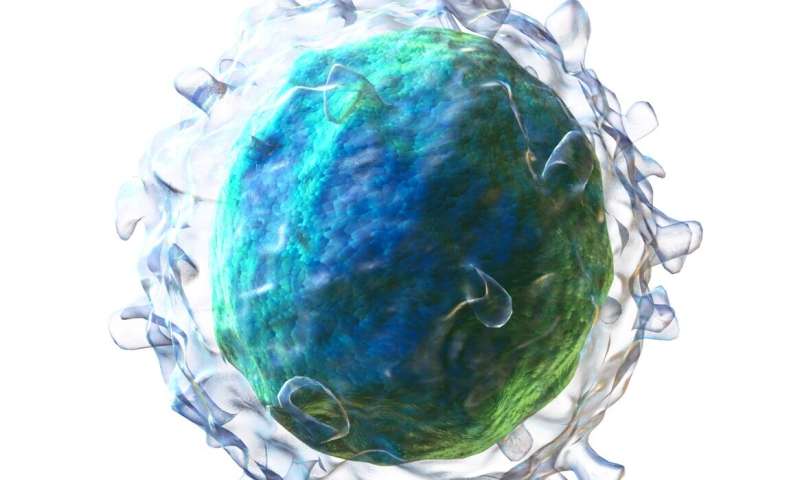This article has been reviewed according to Science X's editorial process and policies. Editors have highlighted the following attributes while ensuring the content's credibility:
fact-checked
trusted source
proofread
Study uncovers early B cell developmental disorders associated with systemic lupus erythematosus

In a study published in the journal Arthritis & Rheumatology, Prof. Zhang Xiaoming's group at the Shanghai Institute Immunity and Infection of the Chinese Academy of Sciences, Prof. Gu Zhifeng at Affiliated Hospital of Nantong University, and Prof. Sheng Zizhang at Columbia University, reveal the immunological characteristics of bone marrow (BM) B cells in patients with systemic lupus erythematosus (SLE) and the potential mechanisms involved in their developmental disorders.
SLE is the prototypical autoimmune disease that affects millions of people worldwide, preferentially in young women, and can involve multiple organs and systems, leading to high morbidity and mortality. A hallmark of SLE is the breach of B cell self-tolerance, which leads to aberrant activation and the production of large amounts of autoantibodies.
Current knowledge of SLE B cells is mainly derived from the peripheral blood, however, whether B cells develop aberrantly in the bone marrow is unclear in SLE patients.
By using single-cell sequencing (scRNA-seq, scBCR-seq) and high-dimensional immune profiling of BM and peripheral blood B cells from SLE patients and healthy donors, the researchers found that BM early B cells were severely decreased in a subset of SLE patients (SLE EBlo group).
Further analysis indicated that the SLE EBlo group had increased clinical disease activities, exacerbated symptoms, and elevated BM local and systemic inflammation compared with the BM early B cell normal SLE group (SLE EBnor group).
At the molecular level, the researchers found that the SLE EBlo group showed abnormal activation of type I interferon and metabolic signaling pathways, as well as dysregulated BCR repertoires in BM and peripheral blood B cells, compared with the SLE EBnor group. They also found that the abnormalities of BM B cells from one patient of the SLE EBlo group were essentially reversed after achieving clinical remission.
The findings of this study revealed the abnormally immunological characteristics of BM B cells in SLE patients, and showed that the SLE EBlo and SLE EBnor groups may represent two different disease states or subtypes, which could contribute to future precise diagnosis and treatment of SLE patients. It also provided a strong basis for further exploration of the pathogenesis and therapeutic strategies in SLE.
More information: Chen Dong et al, Single‐cell profiling of bone marrow B cells uncovers early B cell developmental disorders associated with systemic lupus erythematosus, Arthritis & Rheumatology (2023). DOI: 10.1002/art.42750


















